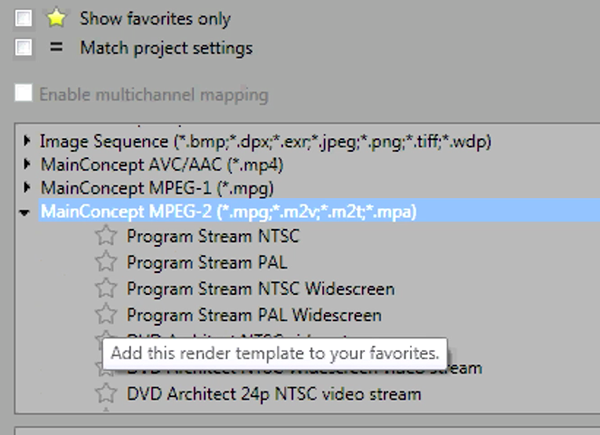Tutorial: Streamlining Video Encoding in Sony Vegas Pro
In this fifth tutorial in our six-part series on Sony Vegas Pro 11, we're going to talk about the Render dialog box. Every project you work on, whether it's delivered on the web, or even on DVD or Blu-ray Disc, has to go through a rendering stage, so you'll find yourself getting quite familiar with it as you do more project. In Vegas Pro 11, Sony has added some new features to the Render dialog, and they've totally revamped the way that it works.
To begin your render, you choose File > Render As (Figure 3, below), and brings up the Render As dialog box shown in Figure 1.

Figure 3. Summoning the Render As dialog
One of the first choices you need to make in the dialog is to specify the folder where you want to save the rendered file (Figure 4, below). Next, you tell Vegas what you want to name it, and you can either click a browse button to navigate to exactly where you want to go.

Figure 4. Choosing a target folder for the rendered video
If you've rendered a file in the past, you can click the drop-down triangle shown in Figure 5 (below), and it will give you a list of recently used render locations. This is really handy if you're working on a project where you have several renders, and they all have to go back to a place that you've recently used.

Figure 5. Accessing recently used render locations
Picking Favorites
Coming down a little further, you have all the rendering formats, and this is where you would choose the general type, or the general format, of render that you're going to do. Clicking another drop-down arrow gives you access to some templates and some presets. None of this is really too different from previous versions of Vegas, other than the way that it looks in the section shown in Figure 6 (below). You'll notice on each one of these presets, you have a star that you can select or deselect by clicking on it. This is one of the new features in Vegas Pro 11.

Figure 6. Choosing an encoding format and selecting favorites
Related Articles
A quick look at the latest new features in Sony Vegas Pro 13, including the Vegas Pro Connect iPad app, a proxy-first workflow for mobile and 4K editors, and true, four-range loudness meters.
David McKnight demonstrates a quick, easy way to generate sharp-looking titles for your Vegas Pro projects that requires no additional plugins.
Vegas Pro 12, the new version of Sony's flagship NLE that debuted a few weeks ago, boasts several new features for online video production pros including simplified color matching, advanced mask creation and manipulation, and increased 64-bit support, while shipping as part of a new suite that includes Sound Forge Pro 10 and the HitFilm 2 Ultimate effects package.
The new mixer layout in Sony Vegas Pro 11 makes editing audio for video in Vegas feel like you're using a pro hardware mixer. Vegas instructor David McKnight explains how it's done.
Sony Vegas instructor David McKnight continues his video tutorial series with a look at Vegas' new GPU Assist feature, which enables Vegas editors to leverage the processing power of supported NVIDIA and AMD video cards to get full-frame previews of loaded timelines and accelerate rendering with many popular codecs.
Sync Linking is a cool new feature in Sony Vegas Pro 11 that allows you to group clips of events and move and control them in the timeline with a single Master clip, while still being able to fine-tune subordinate clips within the group.
In this tutorial you'll learn how to make the most of Vegas's new by-parameter keyframing capabilities for effects plug-ins that ship with Vegas Pro 11 using the new Sony Text & Titles plug-in as an example.